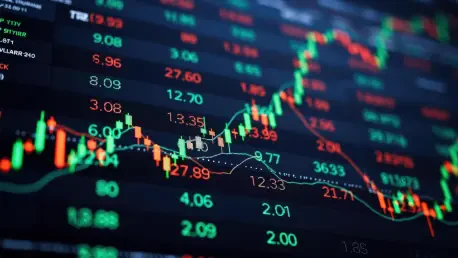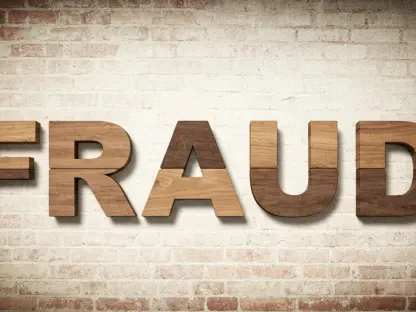What happens when a nation’s political gridlock finally cracks open, unleashing a wave of relief across the globe? On a crisp morning in Washington, D.C., the US Senate’s decisive vote to end the longest government shutdown in history sent shockwaves through financial hubs from New York to Seoul. Stock markets, battered by weeks of uncertainty, erupted in a rally that captured the attention of investors worldwide. This isn’t just a story of politics—it’s a testament to how deeply intertwined government decisions are with the pulse of global economies. The question now looms: can this momentum hold, or is it merely a fleeting reprieve?
The Turning Point That Ignited Wall Street
In a rare display of bipartisan unity, the US Senate voted 60-40 to advance a funding bill, promising to keep the government operational through the end of January. This breakthrough, after over five weeks of a paralyzing shutdown, came as centrist Democrats and Republicans found common ground, a move now awaiting final Senate approval, House passage, and the President’s signature. For markets, the news was akin to a long-awaited rain in a drought—indices that had been teetering on the edge of despair suddenly found new life.
The immediate impact was palpable. Investors, who had grown weary of the political drama, saw this as a signal that the economic machinery might finally grind back into motion. The shutdown had halted critical federal functions, leaving millions in limbo and markets grasping for clarity. This Senate vote, though temporary, offered a glimpse of stability, a commodity in short supply amid recent volatility.
Beyond the political theater, the significance lies in timing. With global economies already navigating choppy waters—think trade tensions and tech sector jitters—this resolution arrived as a critical pivot. It’s a reminder that even in polarized times, a single decision can ripple outward, altering the trajectory of billions in capital overnight.
Why This Resolution Packs a Punch for Investors
The government shutdown wasn’t merely a headline; it was a slow bleed on investor confidence. For over a month, federal workers went unpaid, and vital economic data, such as the Bureau of Labor Statistics’ jobs report, remained unpublished since August. This data blackout left analysts and traders blind to the real health of the US economy, amplifying fears of a looming slowdown.
Compounding the unease were sky-high valuations in sectors like technology, particularly artificial intelligence. Companies such as Nvidia, recently hitting a staggering $5 trillion market cap, and Apple, crossing $4 trillion, became symbols of potential overvaluation. Investors worried whether these giants could sustain such heights if economic fundamentals weakened further. The Senate’s funding bill, while not a permanent fix, acts as a pressure valve, easing immediate concerns and buying time for clearer signals.
The stakes extend beyond Wall Street. A functioning government means restored data flows and federal operations, which could either confirm or dispel fears of recession. For now, this temporary reprieve has shifted the narrative from doom to cautious hope, though the underlying fragilities of an interconnected global economy remain a topic of intense scrutiny.
Global Markets Ride the Wave of Relief
As news of the Senate’s vote spread, financial markets worldwide responded with unbridled enthusiasm. In the Asia-Pacific region, South Korea’s KOSPI soared by 3%, while Japan’s Nikkei 225 gained 1.3%. Hong Kong’s Hang Seng climbed 1.5%, with Taiwan’s Taiex and Australia’s ASX 200 posting gains of 0.8% and 0.75%, respectively. Across the ocean, US futures for the S&P 500 and Nasdaq-100 hinted at a strong opening, rising 0.75% and 1.3%.
This synchronized surge reflects a collective sigh among investors, many of whom had braced for prolonged uncertainty. The numbers tell a story of optimism, a belief that the US, as the world’s largest economy, might steer clear of deeper turmoil. Yet, beneath the surface, questions persist about the durability of this rally, especially given the tech sector’s outsized influence on indices like the Nasdaq.
Market analysts note that while the reaction is positive, it’s tethered to a short-term fix. The funding bill’s January deadline looms large, and global investors remain vigilant. For regions dependent on US economic stability, such as emerging markets, this uptick offers breathing room, but the specter of unresolved issues keeps the celebration in check.
Cautionary Voices Temper the Excitement
Amid the flurry of green on trading screens, not all reactions were celebratory. “This resolution is a patch, not a solution,” cautioned a senior economist from a prominent financial institution, pointing to broader threats like President Trump’s expansive tariff policies. Such measures, if fully implemented, could disrupt supply chains and dampen the very growth markets are now cheering.
Alternative data paints a grimmer picture. Reports from firms like Challenger, Gray & Christmas and Revelio Labs reveal a 183% spike in layoffs during October, marking the highest for that month since 2003, with an estimated 9,100 jobs lost. These figures underscore a disconnect between soaring indices and ground-level economic realities, fueling skepticism about the rally’s foundation.
For every bullish trader, there’s a bearish counterpart warning of complacency. The shutdown’s end may restore government functions, but it doesn’t erase the structural challenges facing the economy. Investors are urged to look beyond the headlines, recognizing that political wins don’t always translate to lasting financial security.
Charting a Path Through the Market Surge
Navigating this sudden market upswing requires a blend of optimism and pragmatism. Investors should start by reevaluating exposure to high-valuation sectors like AI and tech, where bubbles may be forming. Diversifying into more resilient industries, such as consumer staples or utilities, could provide a buffer against potential corrections.
Monitoring upcoming economic data is equally critical. Once federal reporting resumes, metrics like employment figures and GDP growth will offer a clearer picture of the shutdown’s true toll. These insights will be invaluable for adjusting strategies, especially for those with significant stakes in US markets.
Lastly, policy developments demand attention. Tariffs and other legislative moves could introduce fresh volatility, undermining the current gains. By staying informed and agile, investors can capitalize on this surge while preparing for bumps ahead. The market’s trajectory hinges on balancing today’s relief with tomorrow’s uncertainties.
Looking back, the Senate’s vote to end the government shutdown stood as a defining moment, a brief flicker of hope that lifted global markets from the brink. Yet, the road that unfolded afterward demanded more than celebration—it called for vigilance. For investors and policymakers alike, the next steps involved digging into reinstated economic data to gauge the real damage, crafting strategies to mitigate tariff risks, and bracing for the January funding deadline. The challenge remained clear: transform this temporary victory into a foundation for sustained stability, ensuring that political progress translated into enduring economic strength.









